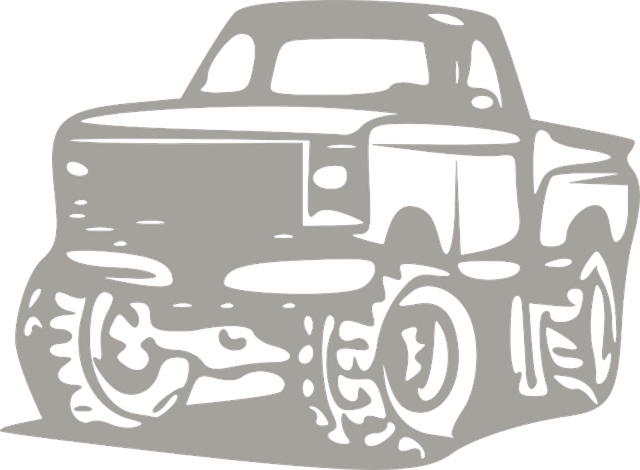Heavy-duty trucks in demanding environments like Brownsville require high-quality recovery lines for safe and efficient operations. These specialized components manage hazardous materials, prevent leaks, and minimize downtime through regular maintenance. Investing in robust recovery lines from reputable suppliers enhances fleet safety, reduces costs, and ensures reliable performance for heavy-duty truck parts and equipment. With diverse options tailored to specific needs, Brownsville fleet can choose the best lines for quick towing, navigating terrains, and long-term service life.
Recovery lines are essential components for heavy-duty truck maintenance, especially for fleets like Brownsville’s. These specialized parts play a critical role in ensuring vehicle safety and reliability during roadside assistance scenarios. With various types available, understanding the right fit for different models is key. This article explores why recovery lines matter for Brownsville’s fleet, offers insights on selecting the best parts, highlights challenges and solutions in sourcing, and provides expert maintenance tips to extend their lifespan.
- Understanding Recovery Lines: Essential Components for Heavy-Duty Trucks
- – Definition and significance in heavy-duty truck maintenance.
- – Brownsville fleet context: why are recovery lines crucial for these vehicles?
- Types of Recovery Lines and Their Applications
Understanding Recovery Lines: Essential Components for Heavy-Duty Trucks

Recovery lines play an essential role in maintaining the operational efficiency and longevity of heavy-duty trucks, particularly in demanding environments like those experienced by fleets operating in Brownsville. These specialized components are designed to withstand rigorous use and extreme conditions, ensuring that vehicles can navigate challenging terrains and continue their vital tasks without interruption.
For the Brownsville fleet, investing in high-quality recovery lines from reputable suppliers offering authentic heavy-duty truck parts is crucial. Such lines are built to handle intense tension, frequent adjustments, and exposure to corrosive elements, making them indispensable for safe and reliable towing and recovery operations. By prioritizing these essential components, fleet managers can enhance safety, minimize downtime, and optimize the overall performance of their vehicles.
– Definition and significance in heavy-duty truck maintenance.

Recovery lines play a vital role in heavy-duty truck maintenance, especially for fleets like Brownsville’s. These lines are responsible for transporting used oil, coolants, and other fluids from various components within the vehicle to collection points or treatment facilities. Their efficient operation ensures that these hazardous materials are managed safely and responsibly, adhering to environmental regulations.
For a fleet such as Brownsville, which relies on reliable and durable heavy-duty truck parts, proper recovery line maintenance is critical. Regular inspection and replacement of worn lines can prevent leaks, minimize downtime, and protect the overall health of the vehicle’s engine and other systems. By prioritizing the integrity of these lines, Brownsville can enhance its operational efficiency and contribute to a greener environment, aligning with sustainable practices in the trucking industry.
– Brownsville fleet context: why are recovery lines crucial for these vehicles?

The Brownsville fleet, comprising a diverse array of heavy-duty trucks, operates in demanding environments where reliability and resilience are paramount. Recovery lines play an indispensable role in ensuring the operational efficiency and longevity of these vehicles. These specialized components are crucial for several reasons: first, they provide a safety net during unexpected breakdowns or off-road situations, enabling drivers to tow and recover their trucks swiftly. Second, with Brownsville’s fleet traversing varied terrains, recovery lines offer the necessary reach and flexibility to navigate challenging landscapes, minimizing downtime and maximizing productivity.
Moreover, the rugged nature of heavy-duty truck operations necessitates durable and high-quality recovery lines capable of withstanding extreme conditions. By investing in robust Brownsville fleet recovery lines and associated heavy-duty truck parts, operators can expect extended service life, reduced maintenance costs, and a minimized risk of catastrophic failures. This strategic focus on critical components ensures the fleet remains reliable, safe, and efficient, ultimately contributing to successful operations and cost savings.
Types of Recovery Lines and Their Applications

Recovery lines come in various types, each suited for different applications. One such category is the Brownsville fleet recovery line, designed specifically for heavy-duty truck parts and equipment. These robust lines are ideal for demanding environments where strength and durability are paramount. They are commonly used in industries that rely on heavy machinery, ensuring reliable performance under extreme conditions.
Another type includes specialized recovery lines tailored for rescue operations, offering enhanced grip and safety features. Moreover, some models incorporate advanced materials and designs to withstand harsh weather conditions, making them indispensable in outdoor settings. These diverse applications highlight the versatility of recovery lines, catering to specific needs across various sectors.
Recovery lines are indispensable for heavy-duty trucks, particularly in demanding Brownsville fleet contexts. Understanding their types and applications ensures optimal vehicle performance and longevity. By prioritizing these essential components, truck owners can enhance safety, reduce downtime, and improve overall efficiency, making them a game-changer in the world of heavy-duty truck parts.



